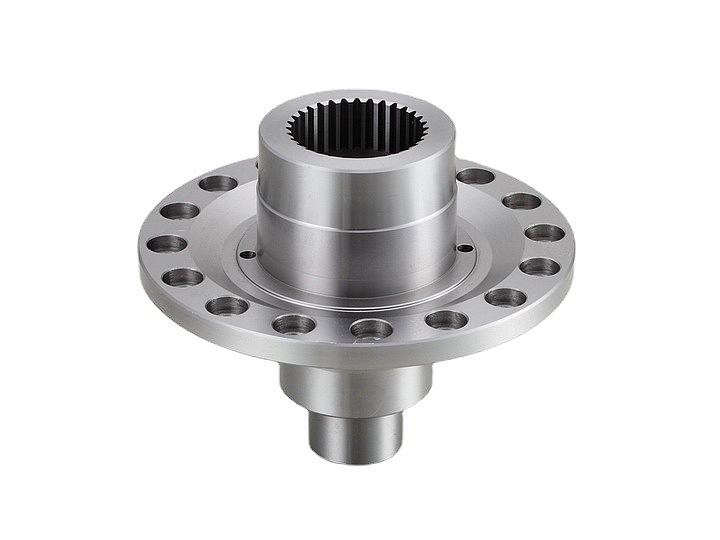From CNC Boring to Consumer Products: The Role of Carbon Steel in Modern Manufacturing
Introduction
In today's Consumer Products industry, carbon steel has become indispensable due to its optimal blend of strength, versatility, and cost-effectiveness. Carbon steel is widely utilized in manufacturing automotive components, home appliances, precision power tools, and durable kitchenware. It ensures product reliability and longevity through its impressive mechanical properties, ease of machining, and excellent adaptability to various fabrication techniques.
Advanced CNC boring services further capitalize on carbon steel’s machinability, enabling precise and accurate internal bore creation. Precision machining ensures superior dimensional stability, tight tolerances, and enhanced surface finishes, crucial for high-quality consumer products.
Carbon Steel Materials for Consumer Applications
Material Performance Comparison
Carbon Steel Grade | Tensile Strength (MPa) | Yield Strength (MPa) | Hardness | Typical Applications | Advantages |
|---|---|---|---|---|---|
440–480 | 370–400 | HRB 58–64 | Automotive brackets, appliance casings | Good machinability, weldability, ductility | |
570–700 | 305–450 | HRC 16–22 | Power tool gears, high-load shafts | Excellent strength, moderate wear resistance | |
655–1035 | 415–655 | HRC 28–32 | Heavy-duty automotive components, equipment parts | Superior toughness, high fatigue strength | |
400–550 | 250–360 | HRB 56–68 | Structural supports, equipment housings | Cost-effective, easy fabrication |
Material Selection Strategy
Selecting appropriate carbon steel grades for consumer products depends on clearly defined performance requirements:
For automotive and household brackets requiring weldability and flexibility, 1018 Steel offers ideal machinability and ductility.
Components such as mechanical gears and precision shafts demanding high strength and moderate wear resistance benefit from 1045 Steel.
Applications subject to significant stress, such as automotive suspension components or power tool drive shafts, are well-suited to the high fatigue strength and toughness of 4140 Steel.
A36 Steel provides affordability and adequate structural integrity for structural frames and economical housings.
CNC Boring Processes and Performance
Process Performance Comparison
CNC Boring Technology | Diameter Range (mm) | Dimensional Accuracy (mm) | Typical Consumer Applications | Key Benefits |
|---|---|---|---|---|
10–250 | ±0.005 | Precision automotive parts, appliance fittings | Exceptional dimensional accuracy, fine finishes | |
20–400 | ±0.01 | Complex power tool components, intricate casings | Enhanced versatility, precision in complex geometries | |
50–600 | ±0.01 | Large appliance frames, equipment housings | Stability and accuracy for large components | |
3–150 | ±0.003 | Ultra-precision tooling, critical internal components | Maximum precision, minimal dimensional deviation |
Process Selection Strategy
Correct CNC boring methods enhance manufacturing precision and product quality:
Precision CNC Boring is optimal for critical parts demanding exact dimensional control, such as automotive and precision appliance fittings.
Multi-axis CNC Boring offers exceptional adaptability for components with complex internal geometries common in sophisticated power tool casings.
For larger structures such as appliance frames or substantial equipment housings, Horizontal CNC Boring delivers the necessary stability and accuracy.
CNC Jig Boring excels in applications requiring ultra-high precision, including precise fittings and internal tooling components.
Surface Treatment Options and Their Impact
Surface Treatment Performance
Treatment Method | Corrosion Resistance (ASTM B117) | Wear Resistance (Hardness) | Temperature Stability (°C) | Applications | Features |
|---|---|---|---|---|---|
≥200 hrs | Moderate | Up to 300°C | Automotive parts, hand tools | Attractive appearance, basic corrosion resistance | |
≥600 hrs | High (up to HRC 35 equivalent) | Up to 200°C | Appliance casings, outdoor products | Durable, aesthetic customization | |
≥1000 hrs | Very High (HV600–750) | Up to 400°C | Precision mechanical parts, wear components | Uniform plating, superior wear protection | |
≥1000 hrs | Moderate | Up to 250°C | Structural supports, outdoor fixtures | Exceptional long-term corrosion protection |
Surface Treatment Selection Strategy
Selecting the right surface treatment significantly enhances carbon steel performance:
Black Oxide Coating is ideal for automotive components and general tools requiring basic corrosion protection and aesthetic appeal.
Consumer appliances and outdoor products benefit from the durability and customizable finishes offered by Powder Coating.
Precision mechanical components requiring high wear resistance and corrosion protection are best served by Electroless Nickel Plating.
Outdoor structural elements and products exposed to harsh environments gain maximum benefit from the long-term corrosion resistance provided by Galvanizing.
Comprehensive Quality Control Procedures
Detailed quality assurance procedures are critical to ensuring consumer product reliability:
Dimensional Inspection: Coordinate Measuring Machines (CMM) and laser scanning methods to ensure precise adherence to specified tolerances.
Surface Quality Assessment: Advanced profilometry and visual inspections verify surface finishes to meet consumer-grade aesthetics and performance standards.
Mechanical Testing: Tensile strength, yield strength, and hardness tests comply with ASTM and ISO standards.
Non-Destructive Testing (NDT): Methods including ultrasonic (UT), magnetic particle inspection (MPI), and radiographic (RT) detect internal defects.
Corrosion Testing: ASTM B117 salt spray tests confirm surface treatment efficacy.
Documentation and Traceability: Comprehensive documentation practices aligned with ISO 9001 ensure full traceability and compliance.
Practical Industry Applications
CNC Bored Carbon Steel Applications in Consumer Goods
Automotive brackets and structural components.
High-precision power tool gears and housings.
Durable home appliance casings and frames.
Robust structural supports for home improvement tools and outdoor equipment.
Related FAQs:
How does CNC boring improve product quality in carbon steel manufacturing?
What are the primary advantages of carbon steel in consumer goods applications?
Which carbon steel grade should be selected for durable power tool components?
What surface treatments best protect carbon steel consumer products from corrosion?
Which quality standards are critical for CNC machined carbon steel components?

